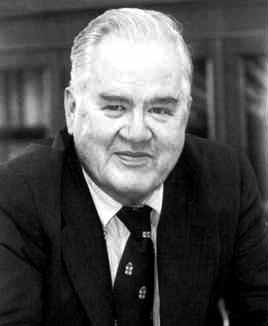John Tukey facts for kids
Quick facts for kids
John Tukey
|
|
|---|---|

John Wilder Tukey
|
|
| Born | June 16, 1915 |
| Died | July 26, 2000 (aged 85) |
| Citizenship | US |
| Alma mater |
|
| Known for |
|
| Awards |
|
| Scientific career | |
| Fields | Mathematician |
| Institutions | |
| Thesis | On Denumerability in Topology |
| Doctoral advisor | Solomon Lefschetz |
| Doctoral students |
|
John Wilder Tukey (born June 16, 1915 – died July 26, 2000) was a brilliant American mathematician and statistician. He is famous for creating the Fast Fourier Transform (FFT) algorithm. This algorithm helps computers process signals very quickly. He also invented the box plot, a simple way to show data. John Tukey is also known for inventing the word 'bit' for computers. He was also the first to use the word 'software' in print.
Contents
John Tukey's Early Life and Education
John Tukey was born in New Bedford, Massachusetts in 1915. His father was a Latin teacher, and his mother was a private tutor. John was mostly taught at home by his mother. He only went to regular school for certain subjects like French.
He studied chemistry at Brown University. He earned his first degree in 1936 and a master's degree in 1937. After that, he went to Princeton University. In 1939, he received his PhD in mathematics.
Tukey's Work During and After World War II
During World War II, John Tukey worked on important research. He helped with fire control systems. He also worked with other famous scientists like Samuel Wilks. Some people say he even helped design the U-2 spy plane.
After the war, he returned to Princeton University. He also worked at AT&T Bell Laboratories. In 1962, he was chosen to join the American Philosophical Society. He became a full professor at Princeton when he was only 35. In 1965, he became the first head of the statistics department there.
Tukey's Impact on Elections and Technology
From 1960 to 1980, John Tukey helped the NBC television network. He designed the polls they used to predict and understand elections. He also advised companies like Xerox and Merck.
In 1973, President Nixon gave him the National Medal of Science. This is a very high honor for scientists in the USA. In 1982, he received the IEEE Medal of Honor. This award recognized his work on the fast Fourier transform (FFT) algorithm.
John Tukey retired in 1985. He passed away in New Brunswick, New Jersey, in 2000.
John Tukey's Scientific Discoveries
Early in his career, John Tukey worked on computer methods at Bell Labs. This is where he created the term "bit" in 1947.
He was interested in many areas of statistical science. He is especially remembered for developing the Cooley–Tukey FFT algorithm with James Cooley. This algorithm is used to quickly process signals and data. In 1970, he also helped develop the jackknife method.
In 1977, he introduced the box plot in his book "Exploratory Data Analysis." A box plot is a simple graph that shows how data is spread out. Several other statistical tools are named after him, like Tukey's range test and Tukey's lemma. He also created simpler methods like the trimean.
In 1974, he worked with Jerome H. Friedman to create the idea of projection pursuit. This is a way to find interesting patterns in data.
Coining the Term Bit
While working on early computer designs, John Tukey met John von Neumann. Tukey came up with the word "bit" as a short way to say "binary digit." A binary digit is the smallest piece of information a computer can understand. The term "bit" was first used in a published article in 1948 by Claude Shannon.
See also

